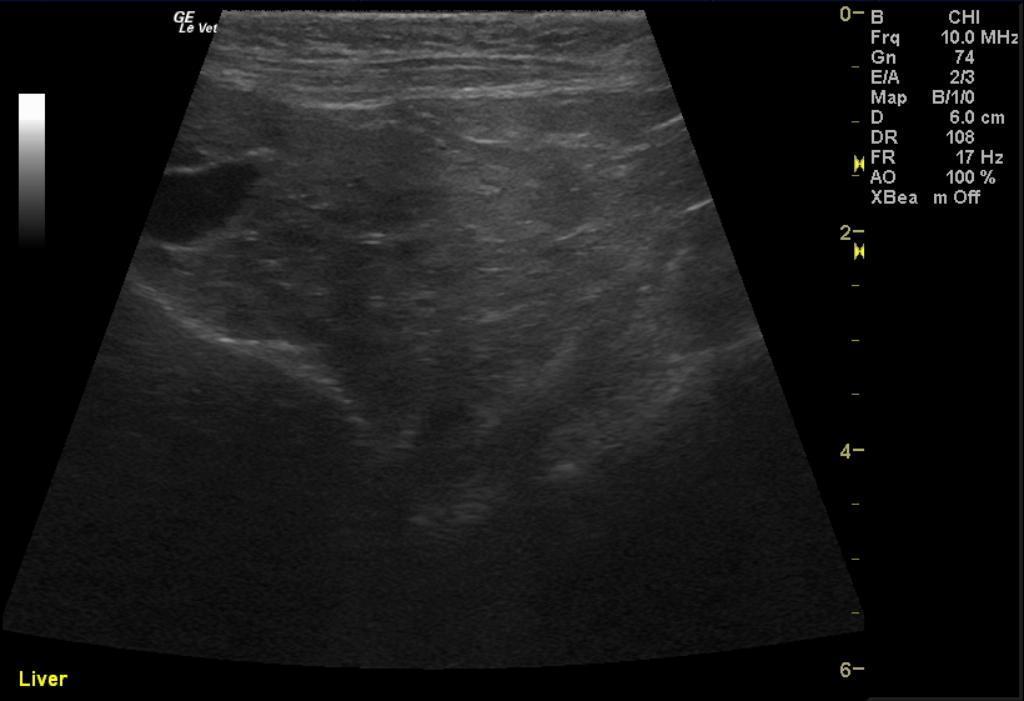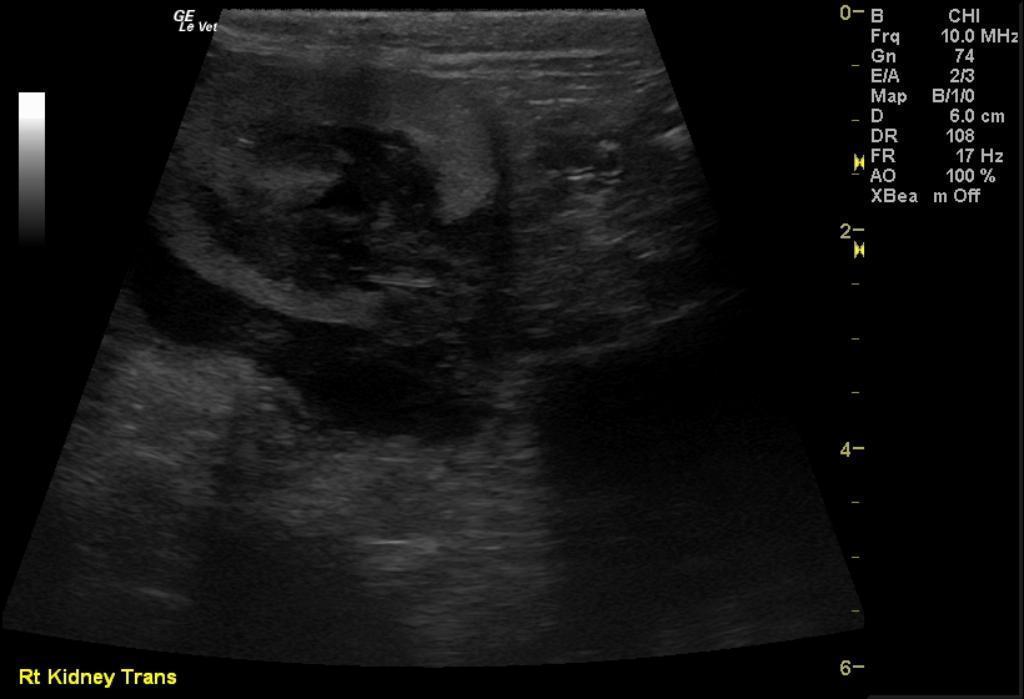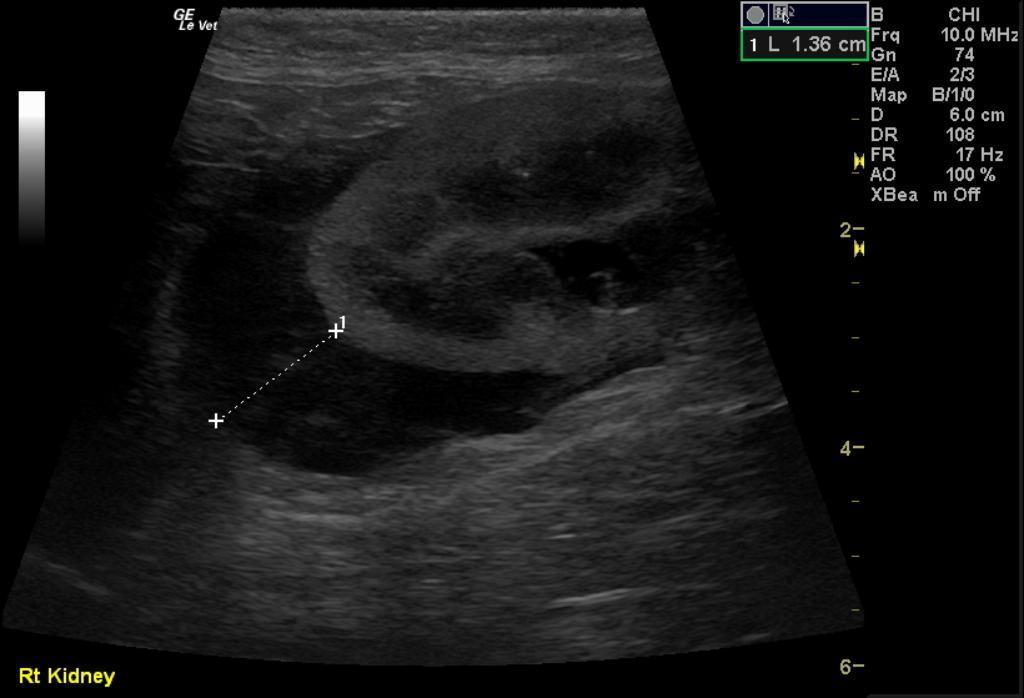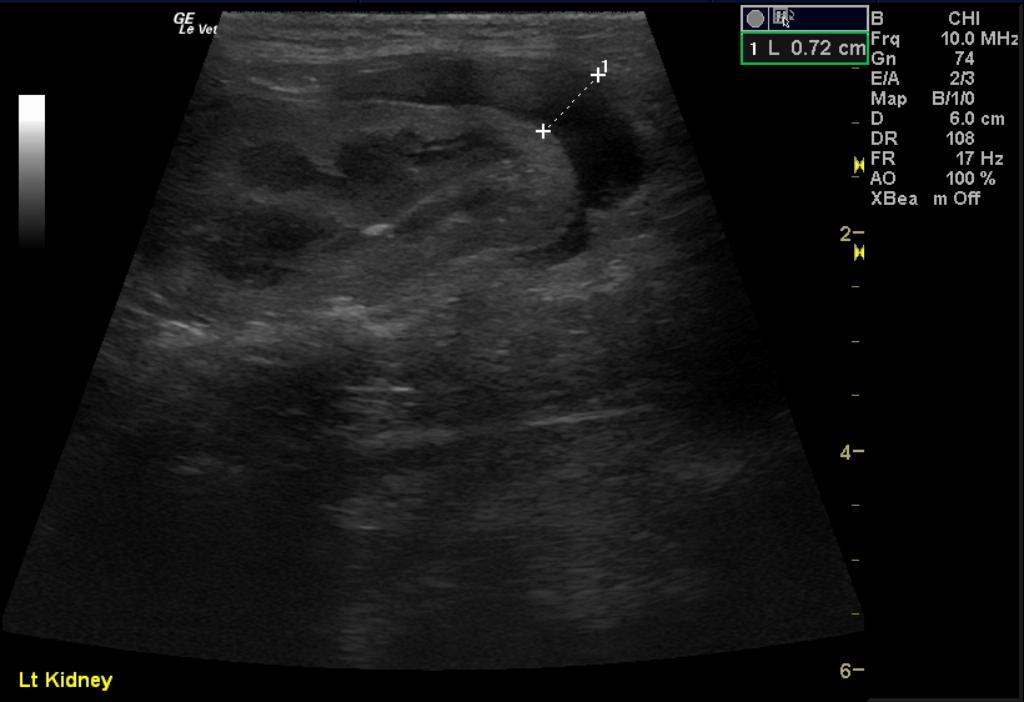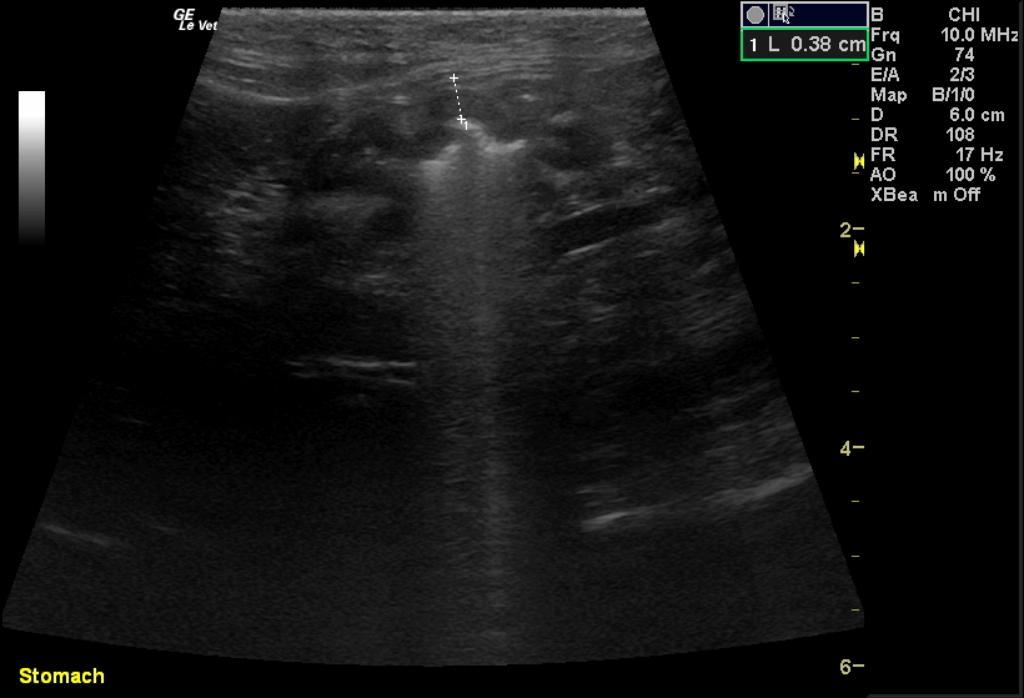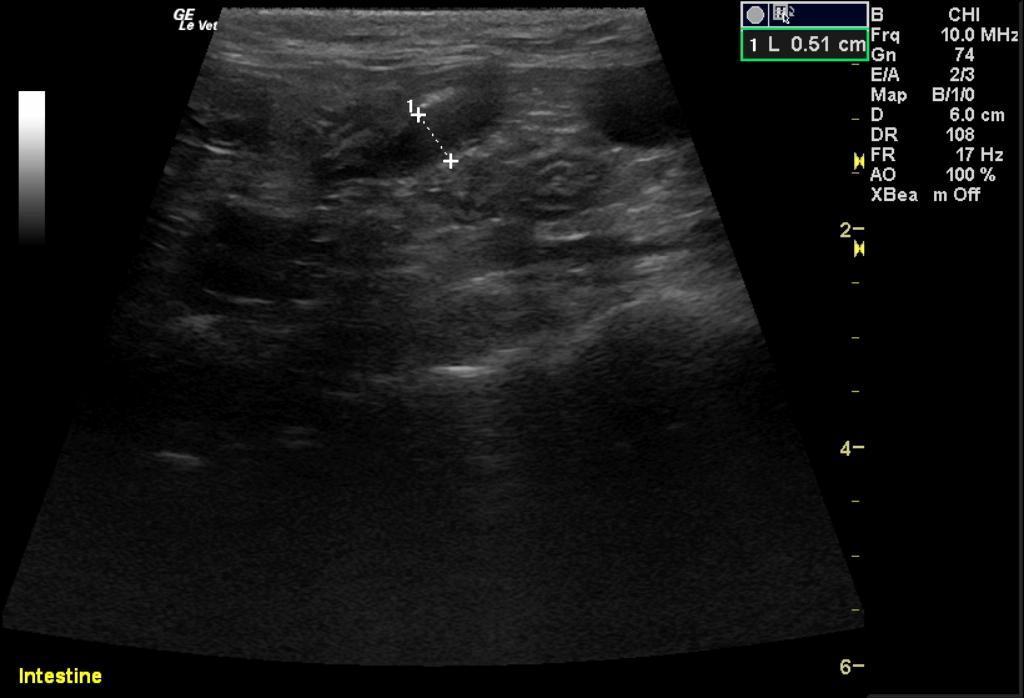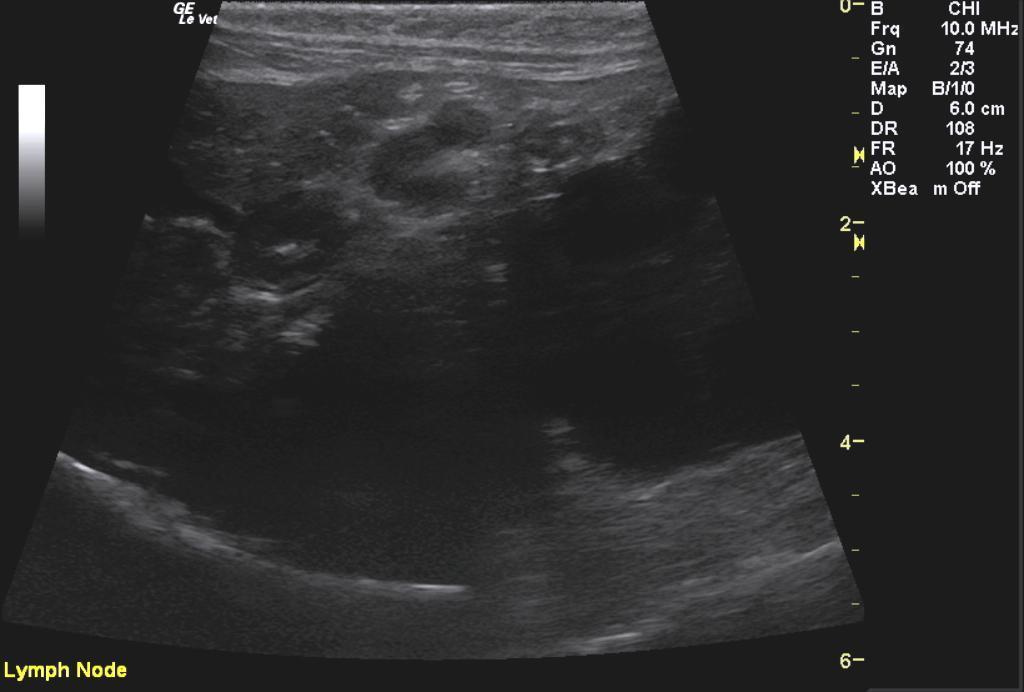Lymphoma Does What Lymphoma Does.
Lymphoma Does What Lymphoma Does.
Anorexia, weight loss, “not doin’ right” are the usual signs in cats that make us suspect lymphoma or similar neoplasia but have us hope for pancreatitis, biliary disease, obstructive urolithiasis, orthopedic disease and other treatable disease with similar vague signs. However, when the uncontrolled cell growth of lymphoma strikes and causes every affected organ to “burst at the seams,” this is what the organs under the probe present like which we then sample accordingly. Dr, Marty Henderson of www.sonovet.us teams up with the amazing Claudia Barton DACVIM (Oncology) for the lymphoma diagnosis in this cat for the January, 2012 SonoPath Case of the month.
Sonogram (Liver): Lizzie
History: A 11-year-old female neutered DSH was presented with a history of anorexia and weight loss. The only abnormality on urinalysis is an inappropriate urine specific gravity ( 1.016). Azotemia is present on serum biochemistry.
(Lobetti DECVIM http://www.sonopath.com/specialists_lobetti.asp):
Anorexia/weight loss – renal/hepatic/cardiac/pancreatitic disease, pyothorax, neoplasia, hyperthyroidism
Renal disease – chronic kidney disease, neoplasia, pyelonephritis, hydronephrosis, renoliths, ureteroliths
(Henderson DVM): Kidney Mass – the findings are severe -DDx: primary renal carcinoma, primary renal TCC, renal lymphosarcoma – may appear as diffuse disease or focal mass. Less likely: renal malignant histiocytosis or mastocytosis, malignant osteosarcoma, hemangiosarcoma .
2) Liver – the findings are moderately-severe – DDx:
a) Hepatic lipidosis / Cholangiohepatitis
b) Infiltrative neoplasia (lymphoma – probable in this case)
c) Chronic vs. Acute hepatitis or cholangiohepatitis (bacterial vs. sterile vs. toxin)
3) Lymph nodes – the findings are moderate – DDx: infiltrative neoplasia is likely vs. reaction
Due to the involvement of the liver, gastrointestinal tract, and multiple enlarged lymph nodes, lymphosarcoma is a highly likely.

